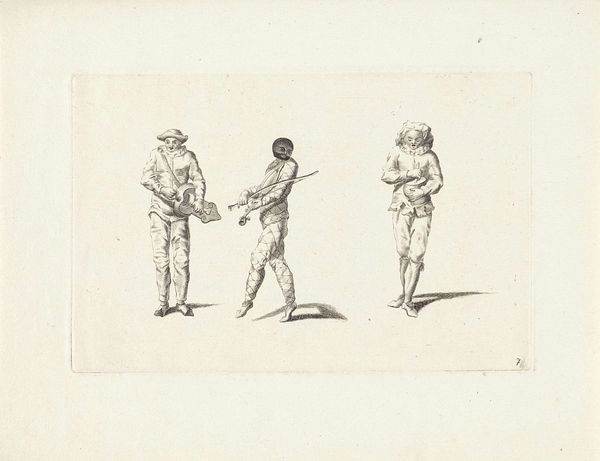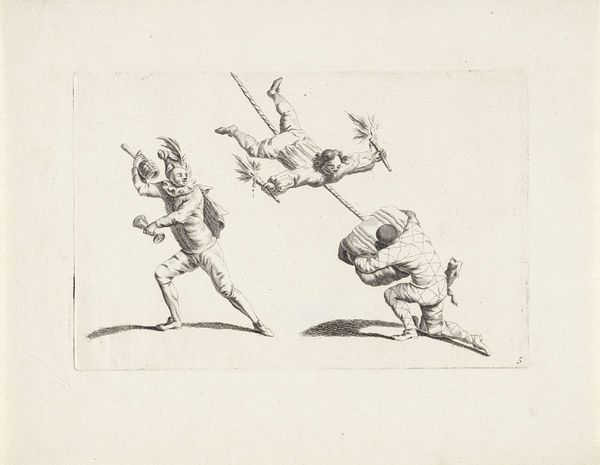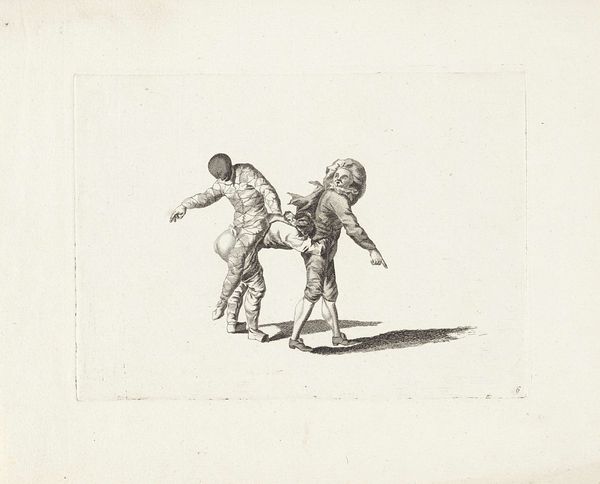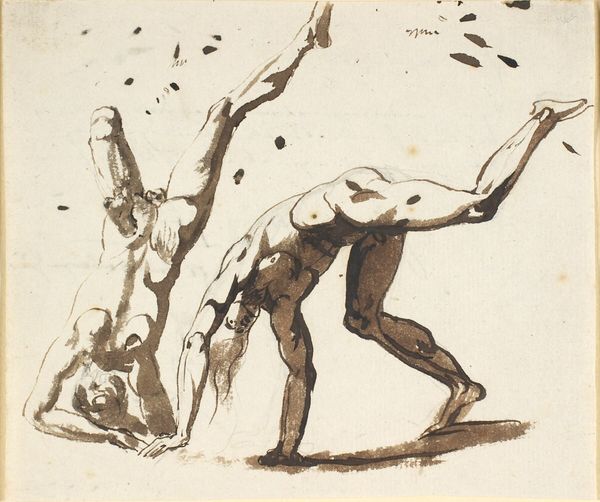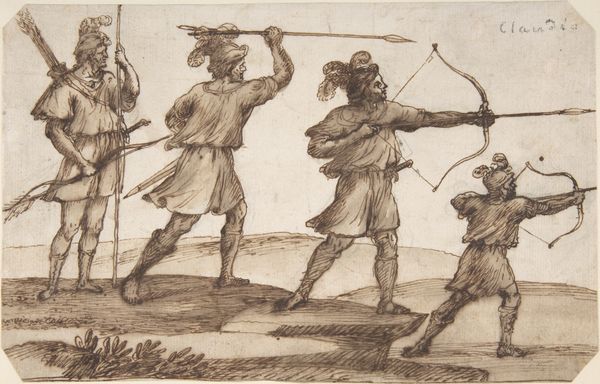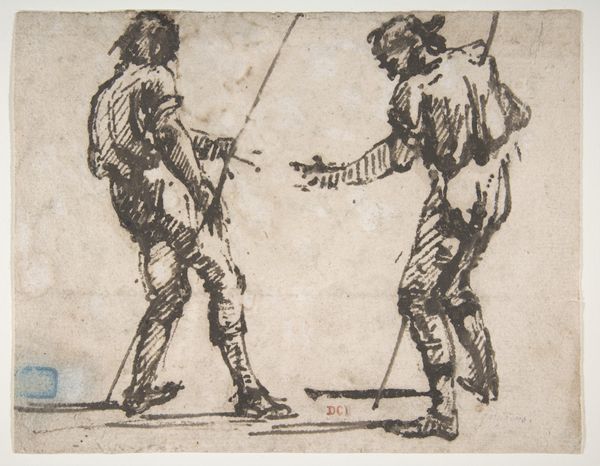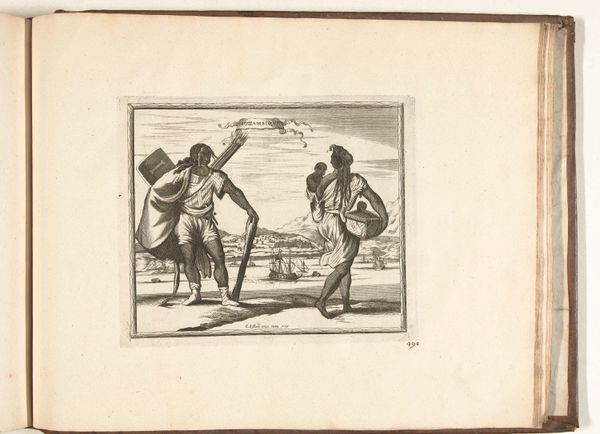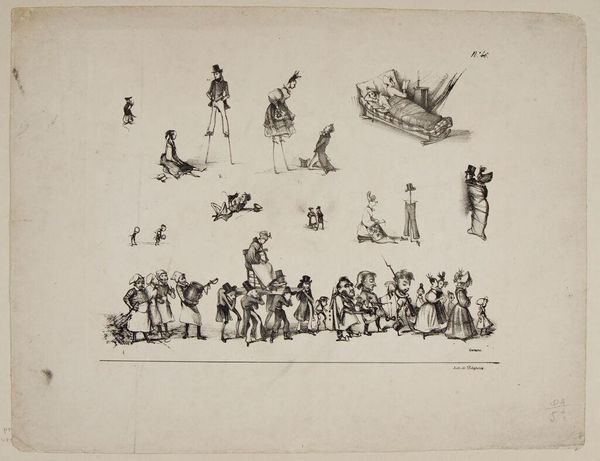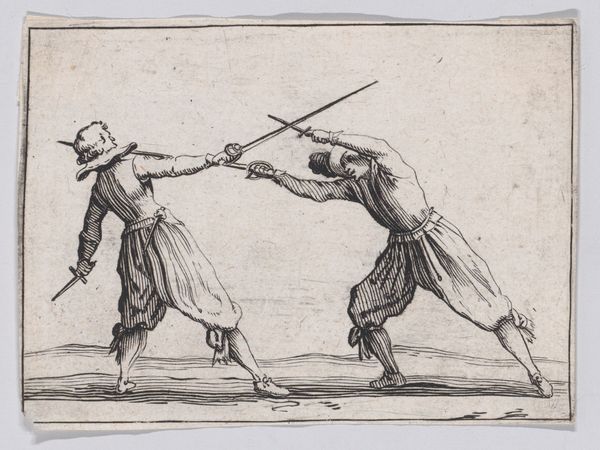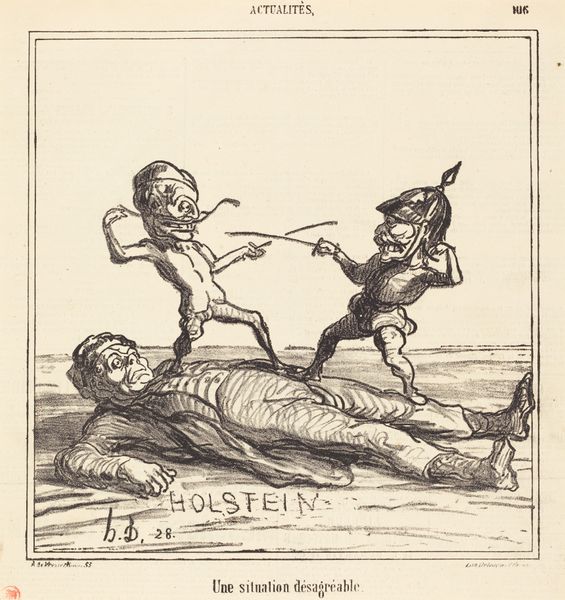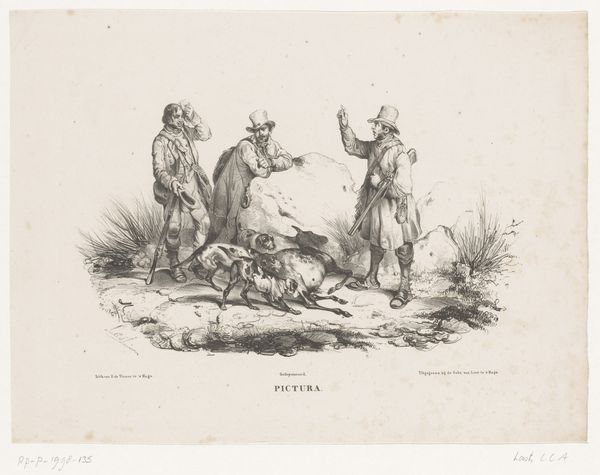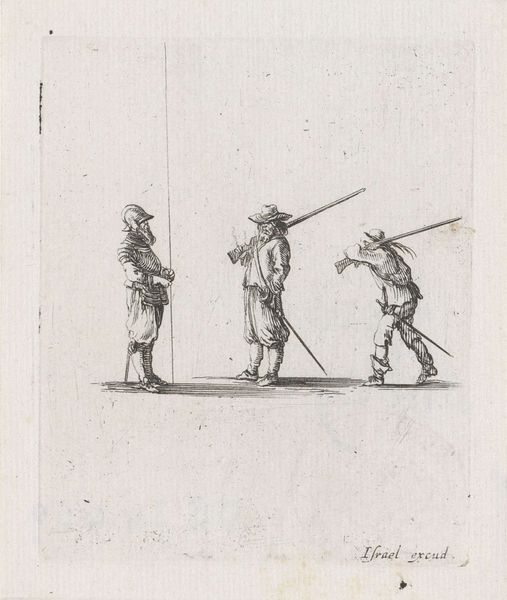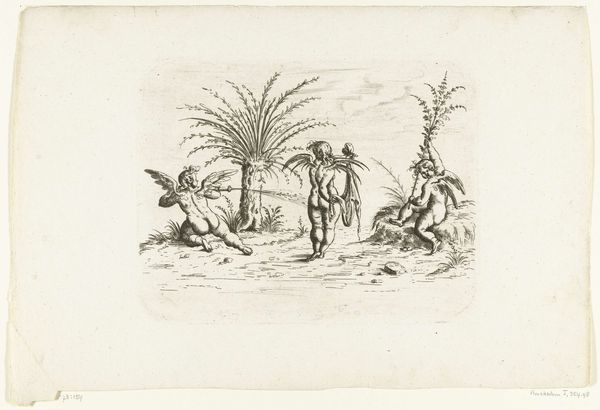
print, etching
#
narrative-art
#
baroque
# print
#
etching
#
figuration
#
genre-painting
Dimensions: height 156 mm, width 230 mm
Copyright: Rijks Museum: Open Domain
Editor: This is "Three Harlequins, One Doing a Handstand," an etching from 1728. I believe it is by G. J. Karrewe. The Harlequins seem mischievous. What social commentaries can we derive from this playful portrayal? Curator: The figure of the Harlequin has a long, complicated history, born out of the Commedia dell’Arte and shaped by social upheaval. Have you considered what this means for Baroque representations of Harlequins, who often embodied cunning, chaos, and a subversion of the social order? Editor: Yes, the playful nature could point to challenging the norms. Their clothing doesn't appear of any known order. But, are there even deeper issues that can be derived? Curator: The presence of a violin, sword, and performance highlights art as part of courtly society. How did these figures simultaneously exist inside and outside traditional structures of power? I think that focusing on this liminal state is necessary in examining their intersectional identity. Editor: I did not think of this! Are they also commenting on the role of a marginalized artist as a political force in the Baroque era? Curator: Precisely! Think about what those specific objects tell us. The sword is an phallic expression, perhaps? Are the harlequins actually satirizing the very systems that enable their existence, or something else entirely? Editor: It is such a playful piece, though. Curator: Remember that comedy is a crucial device that can cleverly conceal critique and provoke thought. Considering the context behind it, the image is now more complex than before. Editor: Yes, understanding the roots of art creation definitely does affect how to appreciate the pieces fully! Thank you! Curator: You're welcome! Never stop asking "why?" That will help you contextualize what, who, when, and where.
Comments
No comments
Be the first to comment and join the conversation on the ultimate creative platform.
